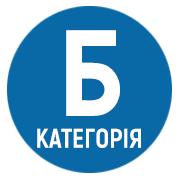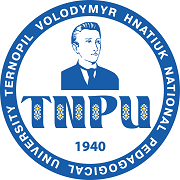INTERRELATED TEACHING OF READING AND SPEAKING IN THE PROCESS OF TEACHING THE UKRAINIAN LANGUAGE AS A FOREIGN LANGUAGE (IN THE TEACHING MATERIALS OF THE MANUAL “UKRAINIAN LANGUAGE AS A FOREIGN LANGUAGE. LEVEL B1”)
DOI:
https://doi.org/10.32782/2415-3605.25.1.1Keywords:
Ukrainian language as a foreign language, interconnected learning, reading, speaking, communicative need, text, types of texts, sample tasksAbstract
Interrelated learning of the Ukrainian language as a foreign language is implemented through a communicativeactivity approach and is determined by the real communicative needs of students. Taking into account the level of language proficiency changes structural and meaningful speech acts. The formation of communicative competence occurs through the interaction of all types of speech activity. Learning to speak or write is impossible without developed skills to recognize and understand text, while listening is impossible without the process of speaking, etc. The author of the article present an analysis of scientific and didactic literature on the research problem. Scientists note that reading in a foreign language as a communicative skill and a means of communication is, along with oral speech, an important type of speech activity and the most widespread way of foreign language communication. Since we are talking about the reproduction of an educational text that must be read and understood, the question of the unity and specificity of reading and speaking as types of speech activity is essential. This explains the relevance of the research topic. The purpose of the article is to describe the methodology of interrelated teaching of reading and speaking in the process of teaching Ukrainian as a foreign language using the didactic material of the manual “Ukrainian as a Foreign Language. Level B1”, written by the teachers of the department of Sumy State University. To achieve this goal, general scientific research methods (analysis, synthesis, comparison, systematization) and linguodidactic methods were used: theoretical – analysis of linguodidactic literature; development of a system of exercises aimed at improving the processes of teaching reading and speaking; empirical – observation of the educational process to determine the level of formation of students' abilities to perceive, understand information and reproduce it in their own created texts. The author of the article made an attempt to develop and describe a special education system that would meet the needs of the modern educational process, namely: fluency in the language, the ability to express one's thoughts, understand interlocutors, use oral language, as well as reproduce and interpret written information. Taking into account the unity of reading and speaking, the article describes and presents three phases of types of speech activity – the motivational-encouraging phase, which is related to the mechanism of motivation; tentative and research; executive The article presents a system of exercises that meets the real communicative needs of students. Promising areas of further research are: research into the skills necessary in the process of forming interconnected types of speech activity at different levels of language proficiency (from basic to advanced); development of a methodology for selecting materials for teaching reading and speaking; creation and testing of simulators for improving reading and speaking skills.
References
Антонів О., Мазурик Д. Стандартизовані вимоги : рівні володіння української мови як іноземної А1-С2. Зразки сертифікаційних завдань : посібник. Київ : фірма «ІНКОС», 2020. 186 с.
Вержанська О., Лагута Т. Креолізований навчальний текст в електронному навчанні. Новий колегіум. 2016. № 1. С. 42–49. URL: http://nbuv.gov.ua/UJRN/NovKol_2016_1_11.
Літвінова О. Мовленнєва діяльність – психолінгвістична проблема. Науковий часопис Національного педагогічного університету імені М.П. Драгоманова. Серія 19 «Корекційна педагогіка та спеціальна психологія». 2013. Вип. 23. С. 343–346. URL: http://nbuv.gov.ua/UJRN/Nchnpu_019_2013_23_103.
Субота Л. Текст як одиниця мовлення і продукт комунікації в навчанні іноземних студентів. Світові виміри освітніх тенденцій : збірник наукових праць / Навчально-науковий інститут міжнародного співробітництва та освіти.
Національний авіаційний університет. Київ, 2024. Вип. 17. С. 156–161. URL: https://repository.kpi.kharkov.ua/handle/KhPI-Press/78273.
Українська мова як іноземна. Рівень В1 : навчальний посібник / Л. Біденко та ін. Суми : Університетська книга, 2020. 363 с.
Bakum Z., Savchak I. Cultural Component in Professional Development of Non-philological Specialties Students in the Process of Studying a Foreign Language. Arab World English Journal (AWEJ). 2021. Volume 12. № 4. P. 69–85.
Hrytsenko O., Zozulia I., Kushnir Ir. Opportunities for Organization of Classes in Foreign Languages by Means of Microsoft Teams (in the Practice of Teaching Ukrainian as a Foreign Language). Theory and Practice in Language Studies. 2023. № 8. P. 1900–1911.
Ushakovа N., Kushnir Ir., Ibrahim Abdallah Al-shaboul. Principles of the structure and functions of work programs of curriculum disciplines of the linguistic cycle for educational migrants : Chapters of Monographs. Problems and prospects of training in higher school: pedagogical, philological, psychological and intercultural aspects. Сh. 3. 2023. Р. 34–49.






